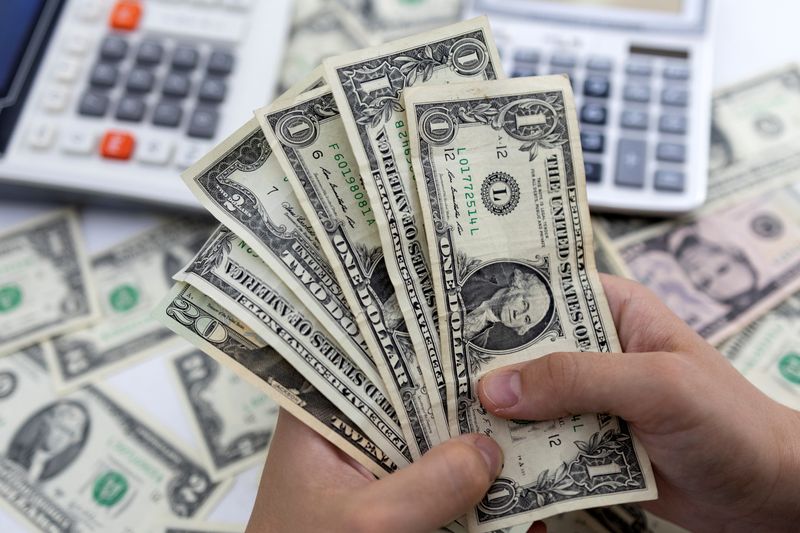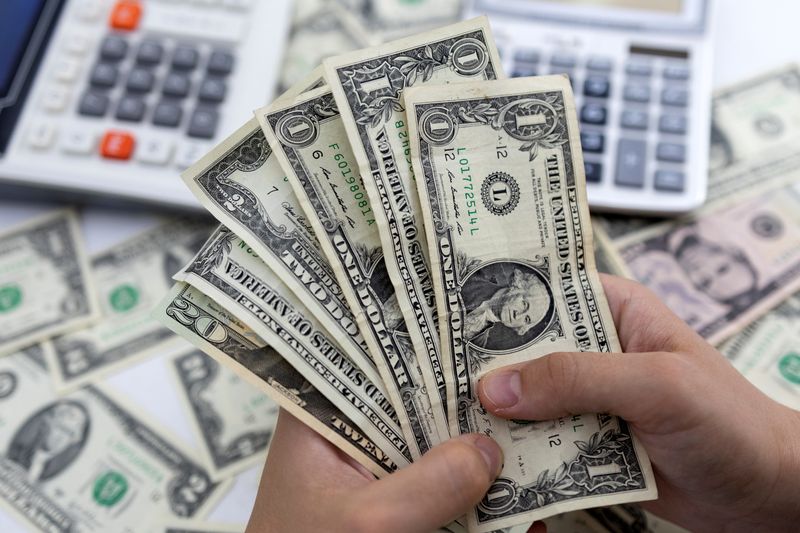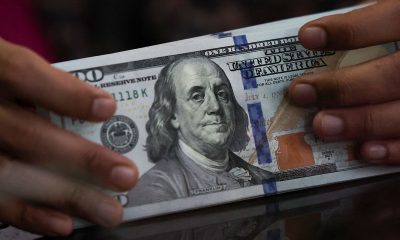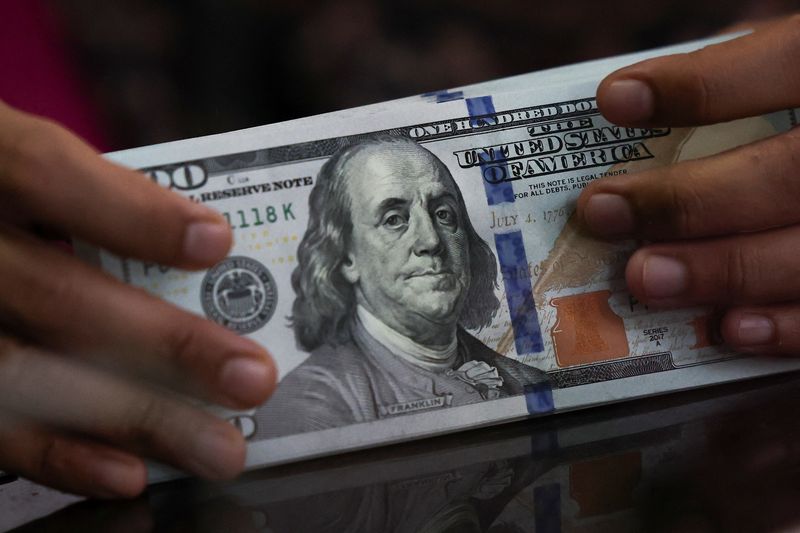Forex
Dollar gains on risk sentiment, Swiss franc falls on surprise rate cut


© Reuters. FILE PHOTO: Woman holds U.S. dollar banknotes in this illustration taken May 30, 2022. REUTERS/Dado Ruvic/Illustration/File Photo
2/2
By Herbert Lash and Joice Alves
NEW YORK/LONDON (Reuters) -The dollar rose on Thursday after the Swiss National Bank’s surprise interest rate cut bolstered global risk sentiment and underscored the appeal of the greenback amid strong U.S. economic growth.
Sterling slid after the Bank of England (BoE) kept its benchmark interest rate on hold as expected. But after the Federal Reserve projected a less restrictive policy stance than expected on Wednesday, risk assets worldwide soared, as did the outlook for investment flows to the U.S.
The SNB’s loosening of monetary policy suggests inflation is under control and other central banks will soon make their policies more accommodative, which has boosted the dollar, said Karl Schamotta, chief market strategist at Corpay in Toronto.
“The U.S. does remain the only game in town in global markets offering higher yields, in nominal and real terms, than any of the other major economic blocks,” he said.
“The flow of currency into the United States remains essentially unstoppable at this point given the optimism around where the U.S. economy is headed.”
The , a measure of the U.S. currency against six major trading partners, rose 0.75%. The euro fell 0.51% to $1.0862.
Fed Chair Jerome Powell said on Wednesday recent high inflation readings had not changed the overall story of slowly easing U.S. price pressures.
Fed policymakers now expect the U.S. economy to grow 2.1% in 2024, above what’s considered its long-run potential and a substantial upgrade from the 1.4% growth seen in December.
“The big question from here for the dollar will be does the pace of inflation that we saw in January and February sustain or does it start to slow down?” said Brian Daingerfield, head of G10 FX strategy at NatWest Markets in Stamford, Connecticut.
“There wasn’t any clear step in the dovish direction like you could argue was shown from the Bank of England today and was obviously delivered by the Swiss National Bank,” he said.
The differential in U.S. interest rates and those of other major economies also helped the dollar. The yield on benchmark rose 0.4 basis points to 4.273%.
The BoE’s interest rate setters voted 8-1 to keep borrowing costs at a 16-year high of 5.25% as two officials who had previously called for higher rates changed their stance.
Governor Andrew Bailey said there had been “further encouraging signs that inflation is coming down” but he also said the BoE needed more certainty that price pressures in the economy were fully under control.
Sterling was last 0.99% lower at $1.266.
The BoE’s decision came a day after data showed inflation fell to its lowest level in almost two-and-a-half years – even if it remains higher than the bank wants.
The Swiss franc fell sharply against the dollar and sank to its weakest point since July 2023 against the euro, after the SNB unexpectedly cut rates.
The euro climbed against the Swiss franc to 0.979, on track to its biggest single day since March 2023. It was last up 0.70% to 0.9753.
The dollar rose 1.26% against the Swiss franc to 0.8981 as the Swiss currency hit its lowest since November.
The SNB cut its main interest rate by 25 basis points to 1.50%, making it the first major central bank to dial back tighter monetary policy aimed at tackling inflation.
The rate cut was the Swiss central bank’s first in nine years. A majority of analysts polled by Reuters had expected the SNB to keep rates on hold.
The yen steadied against a strengthening dollar as it drew some support from expectations of further rate hikes from the Bank of Japan later this year and some jaw-boning efforts from Japanese government officials.
The dollar was last 0.28% higher against the yen at 151.655, after the Japanese currency rallied in Asian trading and reversed some of its heavy losses in the wake of this week’s BOJ policy shift.

 Forex3 years ago
Forex3 years agoForex Today: the dollar is gaining strength amid gloomy sentiment at the start of the Fed’s week

 Forex3 years ago
Forex3 years agoUnbiased review of Pocket Option broker

 Forex3 years ago
Forex3 years agoDollar to pound sterling exchange rate today: Pound plummeted to its lowest since 1985

 Forex3 years ago
Forex3 years agoHow is the Australian dollar doing today?

 Cryptocurrency3 years ago
Cryptocurrency3 years agoWhat happened in the crypto market – current events today

 World3 years ago
World3 years agoWhy are modern video games an art form?

 Commodities3 years ago
Commodities3 years agoCopper continues to fall in price on expectations of lower demand in China

 Economy3 years ago
Economy3 years agoCrude oil tankers double in price due to EU anti-Russian sanctions





























